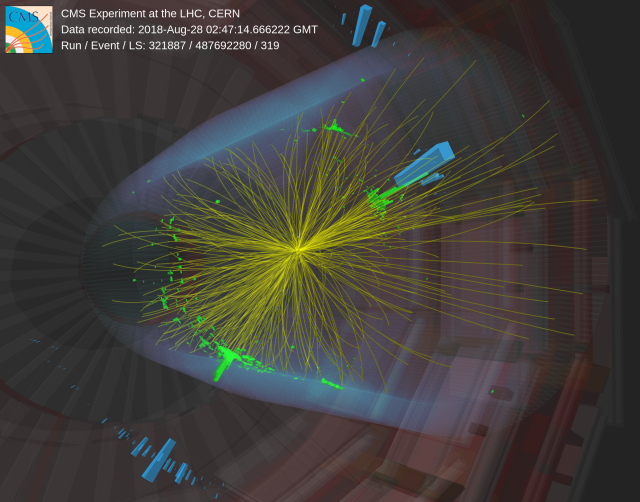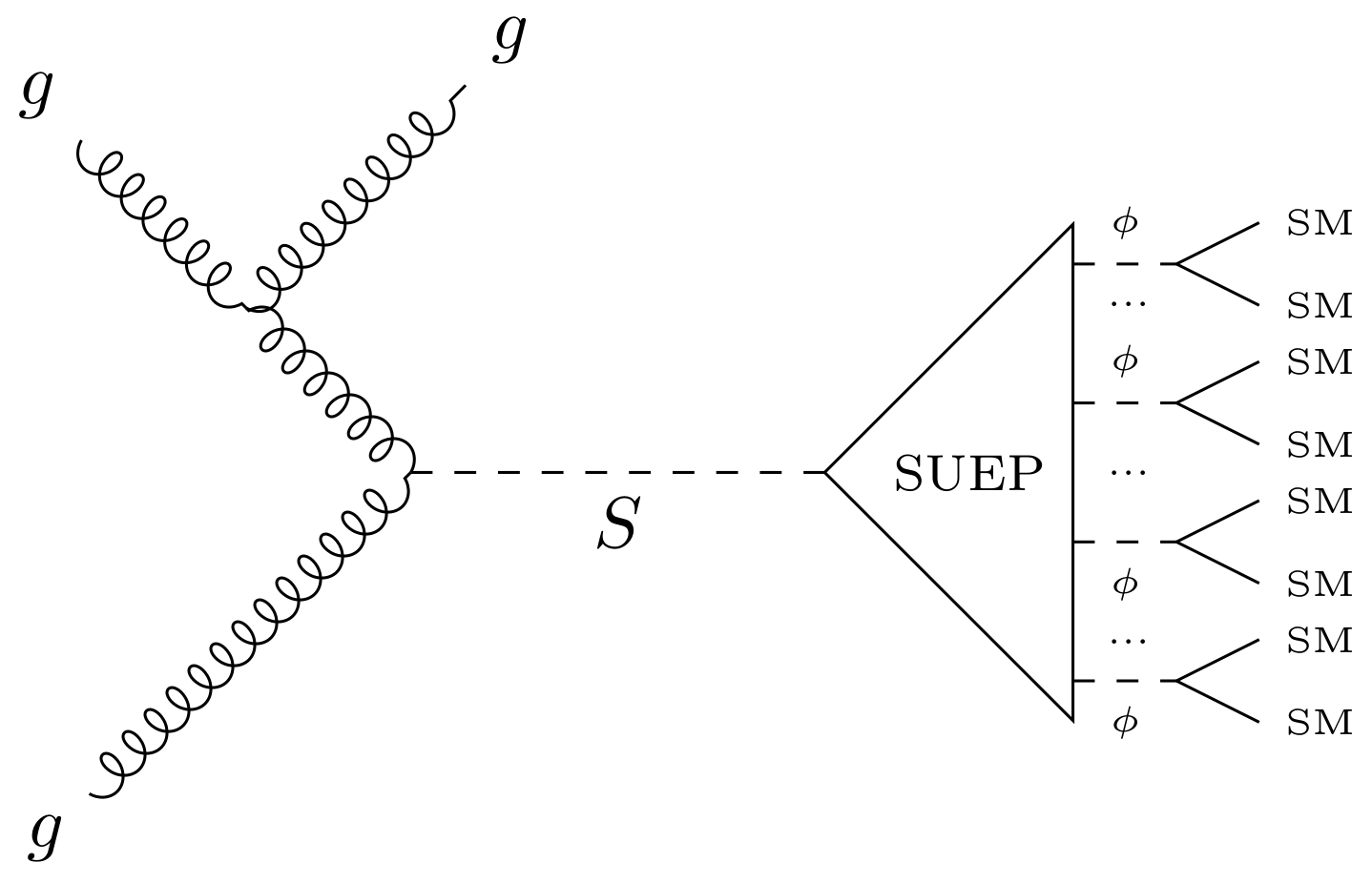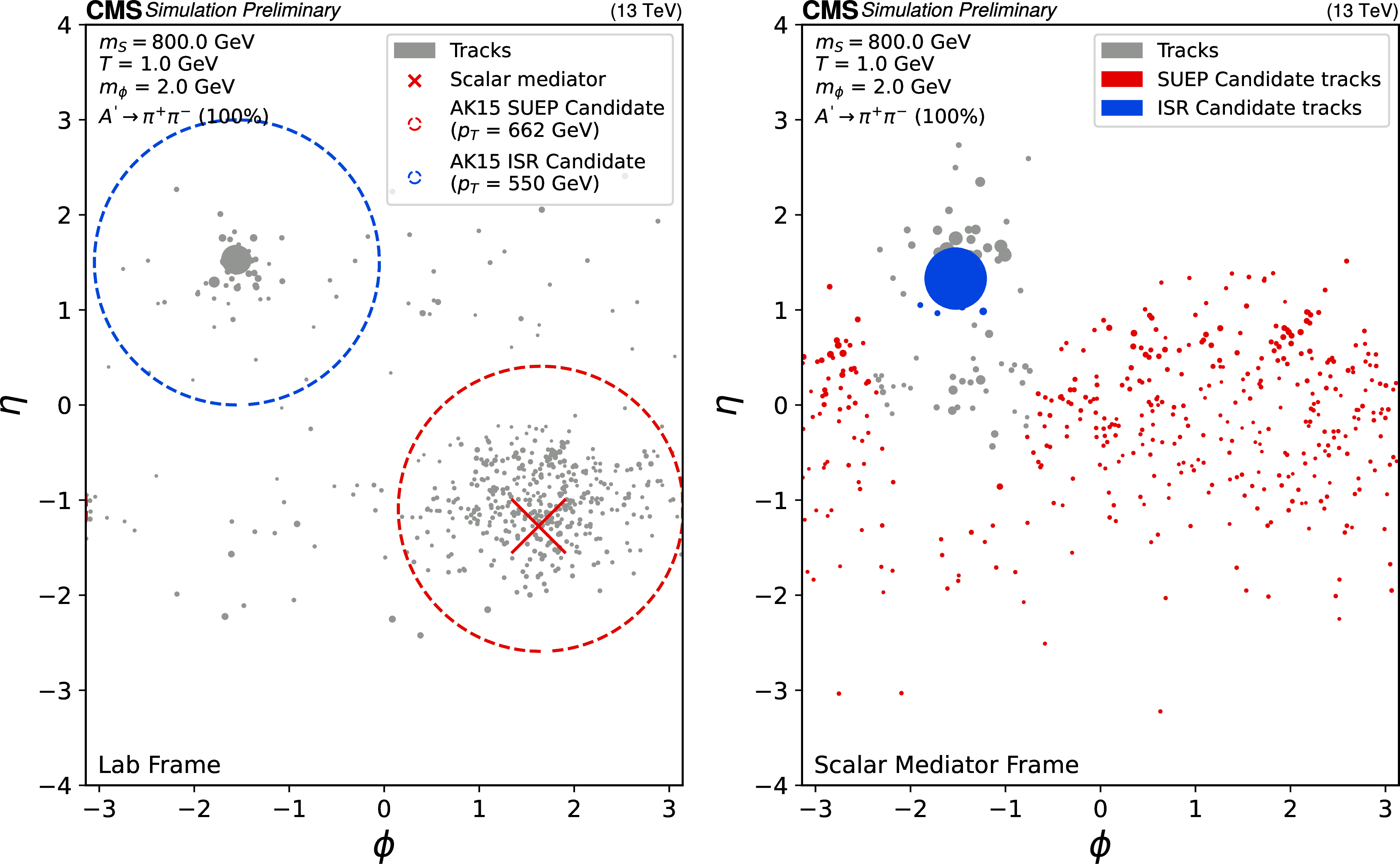
Event display for a potential SUEP event, recorded at CMS in 2018, showing the characteristically high multiplicity of soft tracks in yellow.
Could there be a “dark world“ composed of invisible particles held together by a new strong dark force, much like our protons are held together by the strong force? Studies of stars, galaxies, the cosmic microwave background, and other astrophysical phenomena have indicated the existence of a dark world, containing invisible particles that interact with common matter through gravity, but whose nature is not well understood. This dark world might have a force even more powerful than the strong force of the standard model (SM) of particle physics, the theory that describes the visible part of our world. This new strong force would be transmitted by a ‘dark gluon’, which could bind dark particles into stable, composite particles, analogous to the way that the strong force, mediated by the gluon, holds together the quarks in protons, neutrons, and other hadrons. In “Hidden Valley” models, these dark worlds cannot be seen directly (just like a valley can be hidden from view by a mountain). But the invisible dark world of particles might be accessible via a special trail: a “mediator particle". Thanks to this mediator particle, we might be able to see some of the landscapes of the dark world.
Scientists of the CMS experiment, including lead graduate student L. Lavezzo, along with graduate students C. Papageorgakis and T. Reid, analyzed data recorded in the years 2016-2018 to look for collisions producing signals coming from a hidden dark world. The mediator particle, denoted as S, would be produced via proton-proton collisions at the LHC, able to surmount the “mountain” and descend into the Hidden Valley thanks to the large energy available in these interactions. Once in the Valley, the mediator produces a shower of a large number of dark mesons, denoted as Ф. Due to the strength of the dark strong force, the shower of mesons will look highly spherical, and is sometimes likened to a firework of particles. The momenta of these dark mesons are described by a Boltzmann distribution characterized by an effective “temperature”. The dark mesons decay back to ordinary matter through another hidden-sector particle, analogous to the photon. The result of such collisions is unlike anything that can be produced by the known forces: hundreds of low energy particles emerging from a single proton-proton collision point. This is called a “soft unclustered energy pattern” or SUEP.

Figure 1: Feynman diagram showing the production of the mediator particle ‘S’ recoiling against a gluon ‘g’. The mediator decays to a shower of dark mesons ‘Ф’, which then decay to SM particles.
Because of their low energies, these particles can be challenging to detect in an experiment optimized for the study of high energy phenomena. However, as illustrated in Fig. 1, sometimes the mediator S can recoil against a gluon “g” (or other particles) radiated off by the constituents of the proton, a process called initial state radiation (ISR). This recoil causes the mediator to be produced with a large momentum. Subsequently, all the particles produced by the mediator are pushed to higher energies, which can be measured by CMS, and are collimated into a wide but well-defined cone, called a “wide jet”.
From the data collected in 2016-2018, events are selected with two wide jets recoiling against each other and which contain charged particles that leave tracks in the detector. The wide jet with the largest number of particles is taken to be the SUEP candidate, while the other is taken to be the ISR candidate. By transforming our coordinate system into the viewpoint of the SUEP candidate, real SUEP events would reveal themselves as an almost uniform spray of particles across the detector, as seen in Fig. 2.

Figure 2: Angular distribution of tracks before (left) and after (right) boosting to the frame of the scalar mediator, from simulated events. Tracks associated with the SUEP candidate are indicated in red, while those associated with the ISR candidate are indicated in blue.

Figure 3: Reach of the current search in terms of the mass of the mediator S, the mass of the dark meson ɸ, and the interaction temperature.
The range of mediator masses, dark meson masses, and temperatures that would have been discoverable is shown in Fig. 3. So far, the search has not revealed evidence of the Hidden Valley: events passing the selection requirements occur at the rate expected from known standard model sources. The dark world remains hidden for now but there are many paths yet to explore. The search will continue with improved sensitivity, thanks to the larger event samples currently being collected at the LHC and, later on, at its high luminosity upgrade, the HL-LHC.
Read more about these results:
-
CMS Physics Analysis Summary (EXO-23-002): "Search for soft unclustered energy patterns in proton-proton collisions at 13 TeV"
-
@CMSExperiment on social media: LinkedIn - facebook - twitter - instagram
- Do you like these briefings and want to get an email notification when there is a new one? Subscribe here

